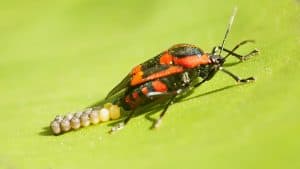As temperatures cool, it isn’t unusual to see Halloween decorations featuring spiders and other pests. The real thing is an unwelcome guest in most houses, however.
As the weather gets colder, spiders and insects look for warmer temperatures … and that’s often inside people’s homes.
“They’re designed to find a place to hibernate and make it through the winter,” Randall Butler, owner of Butler Pest Control Services in Tennessee. “They know the weather’s changing and they’re looking for a place to get in out of the cold.”
Threats posed by invading insects
When bugs settle into your home, they can cause a host of problems. Most people worry about health-related issues when they spot insects in their home.
Cockroaches can carry bacteria like E. coli and salmonella. Ants have the ability to contaminate food, and other insects can flare up allergic reactions in people. During the winter, when human immune systems are already being tested, an influx of bugs can add to their health problems. This is why, especially in the winter months, it could be crucial for homeowners and families to look at the likes of terminix pest control services or others similar, to eradicate any pest invasions before it impacts their health.
An insect invasion can also be costly to the homeowner, however. While cooler climates might see a decrease in activity from wood-destroying insects like carpenter ants or termites, warmer areas will continue to be susceptible to such infestations; and wetter fall months create the right conditions for heavy winter infestations.
When these pests move in, the results aren’t cheap. In fact, the cost to repair damage from termites alone in the US is estimated to be about $5 billion a year. For the individual homeowner, repair costs can climb in excess of $3,500 if the damage is severe.
Then there’s the most common threat posed by these armies of pests: the grossness factor. No one likes seeing bugs crawling around their home, but this year people might be able to smell them as well, because stinkbugs are back with a vengeance.
Known as the marmorated stink bug, these pests from Asia have now been spotted in 40 states and begun moving into people’s homes as the temperatures cool down.
“Although they are a significant agricultural problem and concern for farmers,” said Missy Henriksen, a spokeswoman with the National Pest Management Association, “they are also quite a nuisance to homeowners.”
The problems for homeowners come from the smell these pests emit when frightened or squashed. They also congregate near television screens and computer monitors due to the warmth the machines generate.
Homeowners can fight back
To reduce the costs associated with pest infestations, homeowners can fight back by reinforcing their defenses against invaders. Experts say the best defense is to seal up doors and windows with caulk or weather stripping and reduce the small openings that most insects use to gain entry.
Other areas on the exterior of the home that need to be inspected are plumbing inserts and areas where telephone, cable, and electrical lines penetrate the walls. These areas should be sealed properly to keep intruders out.
Mulch surrounding the home should also be raked away from the foundation, because insects are attracted to the moisture it traps. Trees and bushes should also be trimmed back so they are not touching your house.
Residential structures can also be sprayed inside to kill any bugs that have already settled in your home. In addition, preventive spraying around the perimeter can help create a barrier that keeps many of these insects from ever making it inside.
Finally, experts say that environmental factors in the home can also keep bugs away. That means good sanitation. “Sanitation inside and out is the very best control,” says Brian Signaigo of the University of Tennessee. In other words, if there’s nothing around to attract them in terms food as well as shelter, they’ll move on to a more desirable site.

